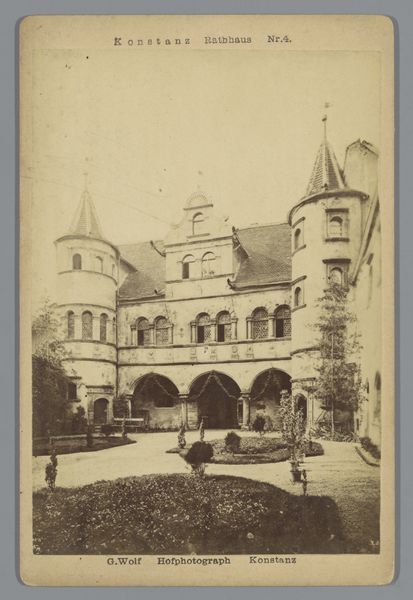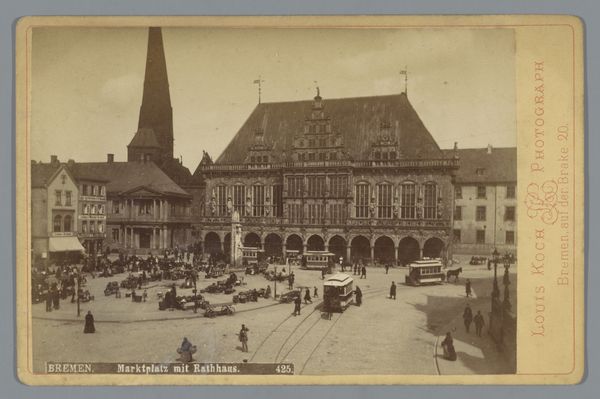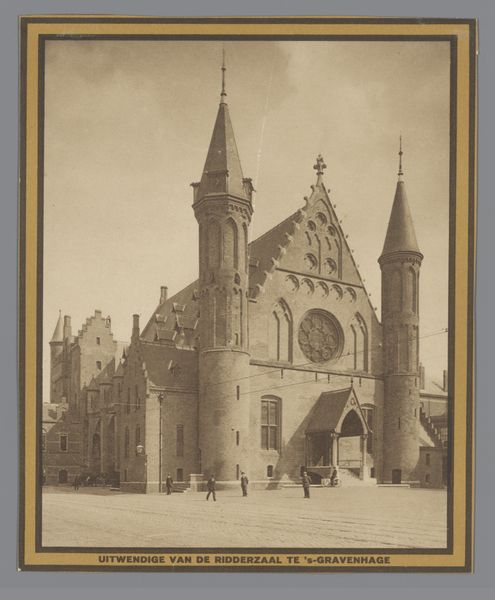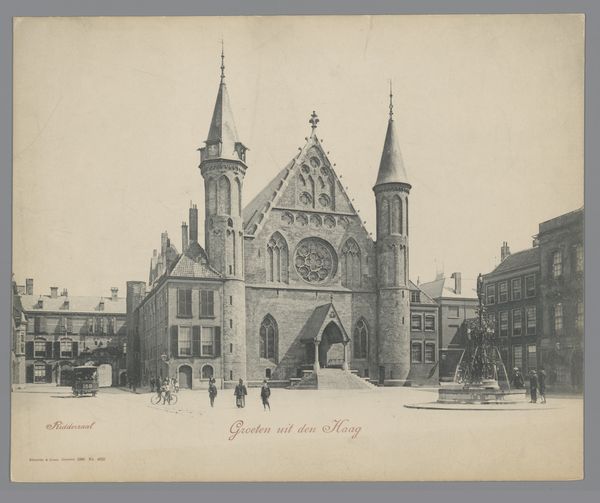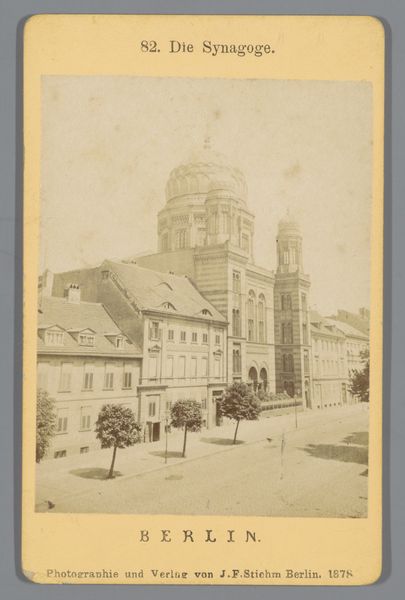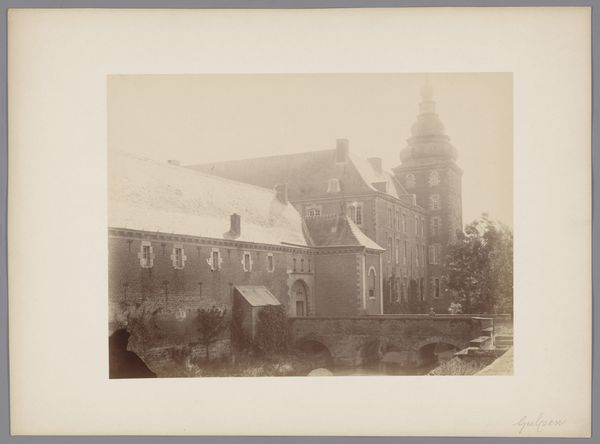
Gezicht op de Sint-Servaasbasiliek en de Sint-Janskerk te Maastricht 1885 - 1900
0:00
0:00
print, photography
# print
#
photography
#
cityscape
Dimensions: height 109 mm, width 163 mm
Copyright: Rijks Museum: Open Domain
Théodor Weijnen made this photograph of the Sint-Servaasbasiliek and the Sint-Janskerk in Maastricht sometime in the late nineteenth century. Note how the composition establishes a relationship between the imposing architecture of the churches and the leisure activities of everyday life. This connection to the social realm wasn't accidental. The late 1800s saw photography being used as a tool for documenting social change. The rise of the middle class and increased leisure time meant public spaces, like the one depicted here, became important sites for social interaction. Developments in photographic technology made it easier to capture these scenes. To understand this image fully, we can delve into the archives of Maastricht, examining city plans and social surveys to uncover how civic life unfolded. By looking into municipal records, local newspapers, and personal accounts, we discover the intricate relationship between the city's inhabitants and its institutional structures. This photograph, therefore, becomes an artifact that reflects both social and institutional histories.
Comments
No comments
Be the first to comment and join the conversation on the ultimate creative platform.

